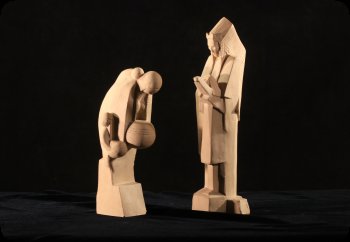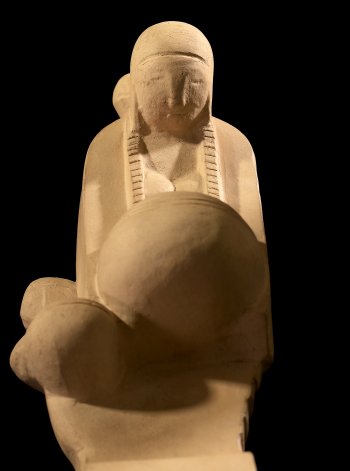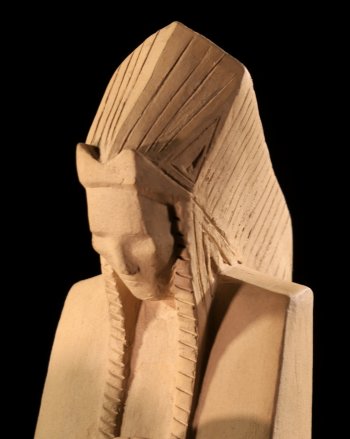Nakoma & Nakomis
These terracotta sculptures were produced in 1929-1930 by Charles L. Morgan, cast from the original plaster models sculpted by Frank Lloyd Wright. The figures represented Wright’s designs for proposed monumental entry figures to the Community of Nakoma Country Club in Madison, Wisconsin, which were never ultimately completed. These designs were likely the last figurative sculptural works created by Wright, his interest in exploring natural themes and material taking priority in his later designs.
The figures are purported to represent two figures from Winnebago tribal culture, although Wright’s romanticized depictions are more in line with Western stereotypes of indigenous peoples. The Nakomis figure, with its masculine, angular geometry, teaches his son to shoot an arrow. The Nakoma figure with children, all feminine, organic curves, is hunched over, carrying a vessel that is as rounded as their heads. Both figures encapsulate Wright’s prevailing interests in design, which borrows from both the organic elegance of the Arts and Crafts movement as well as the streamlined modernism of the 1920s.
Frank Lloyd Wright was an important American architect, designer, and educator associated with the Prairie School movement of architecture. Wright lived in Oak Park, Illinois, for much of his early career, and many of his buildings can be found throughout the state, including his important, early commission, the Dana-Thomas House in Springfield.







